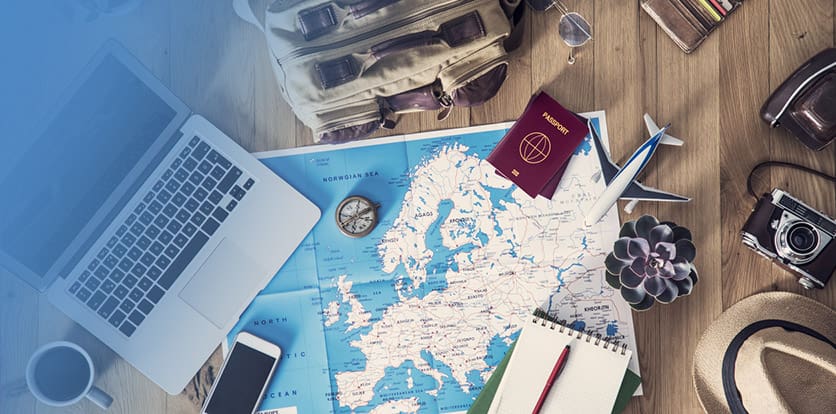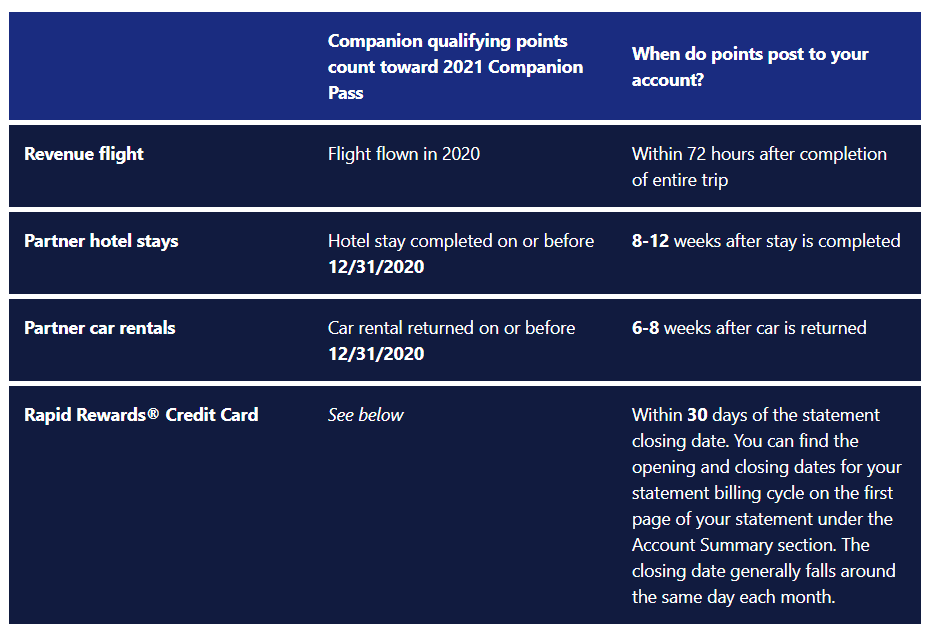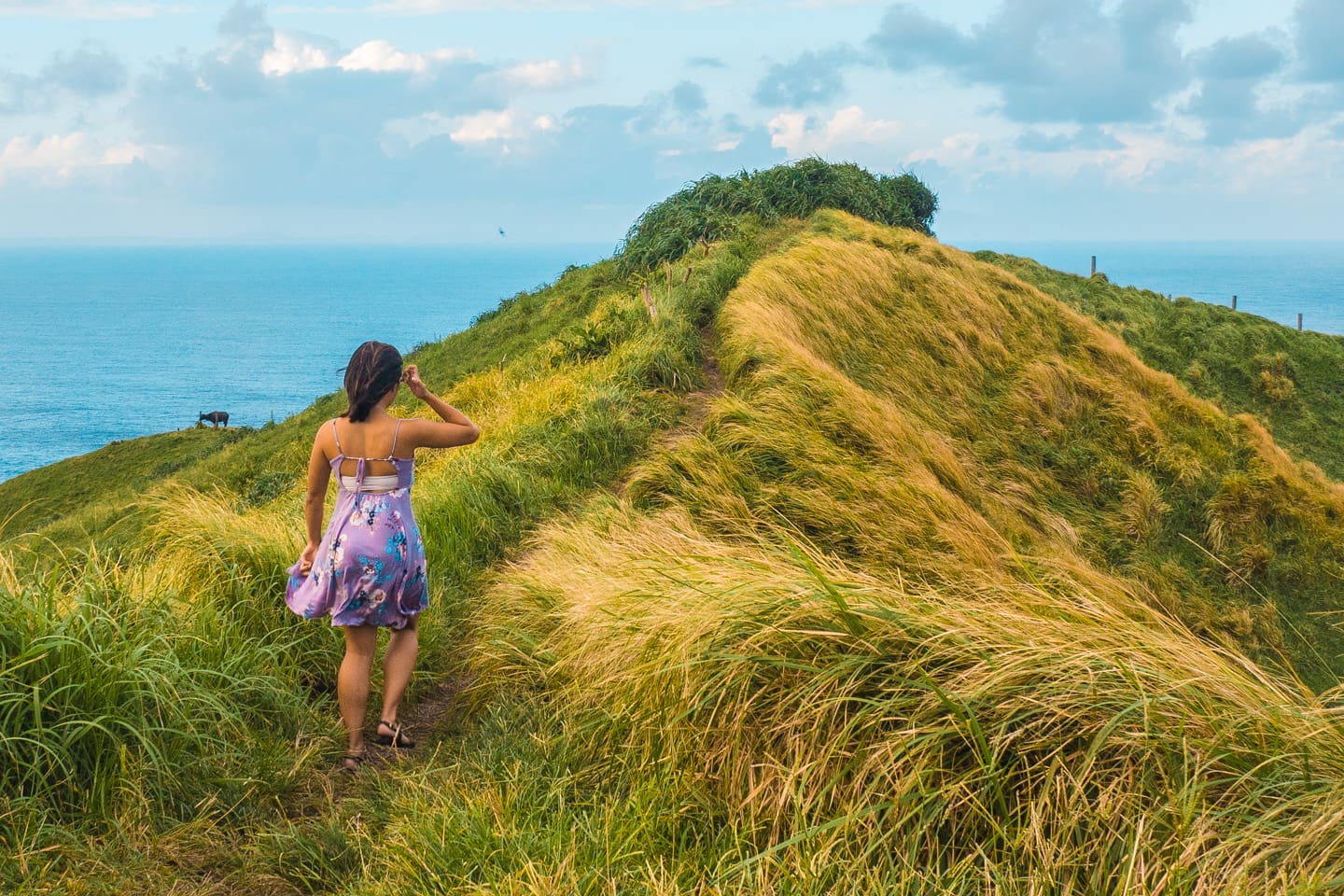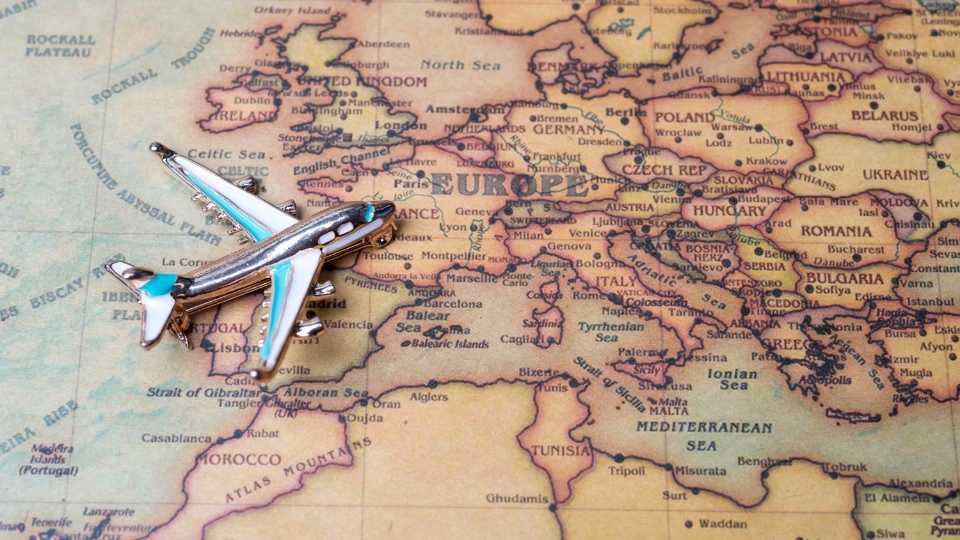Travel Planning
The Real Life Adventures: Family Travel Blogs


As a traveler and parent, I understand the challenges that come with embarking on family adventures.
But let me tell you, the world of family travel blogs is a treasure trove of inspiration, insights, and practical tips for a successful journey.
From amazing mom bloggers sharing their experiences to dad’s heartfelt travel diaries, and even full-time traveling families embracing the nomadic lifestyle – there’s something for everyone.
Plus, don’t miss out on discovering the unique perspectives of children when it comes to travel and exploration.
So grab your passports and join me on this exciting adventure!
Key Takeaways
- Mom bloggers and dad’s travel diaries provide valuable resources for families planning vacations, offering personal experiences, tips, and advice.
- Full-time traveling families embrace flexibility, adaptability, and minimalism, while creating memories, experiencing new cultures, and engaging in adventure.
- Children’s perspectives on travel and exploration highlight the wonder, curiosity, and opportunities for growth that come with experiencing new places and interacting with locals.
- Tips and advice from family travel blogs include involving everyone in the decision-making process, packing light, researching kid-friendly activities, and embracing the culture of the destination for lasting memories.
The Adventure Begins: Exploring the World of Mom Bloggers
Let’s dive into the world of mom bloggers and see how they embark on their family travel adventures. Mom bloggers have become a valuable resource for families looking to plan their vacations and create lasting memories.
These moms share their personal experiences, tips, and advice on their blogs, offering insight into everything from packing essentials to kid-friendly destinations. They provide valuable information on finding the best deals, navigating airports with little ones, and even managing tantrums while on the road.


Their stories are not only informative but also engaging, as they often include beautiful photos and heartfelt anecdotes that truly capture the essence of family travel.
As we transition into the subsequent section about ‘dad’s diary: a journey through travel and parenthood’, we can expect a different perspective on family adventures, highlighting the unique experiences of fathers in this exciting journey.
Dad’s Diary: a Journey Through Travel and Parenthood
Immerse yourself in the journey of a father as I share my experiences and insights on travel and parenthood. Traveling with children can be both rewarding and challenging, but with proper planning and a positive mindset, it becomes an incredible adventure for the whole family.
As a dad, I have learned that preparation is key when traveling with kids. From packing essentials like snacks, toys, and extra clothes to researching child-friendly activities at your destination, these small details can make a big difference in ensuring a smooth trip.
One of the most important aspects of family travel is creating lasting memories together. Whether it’s exploring new cities, hiking in nature, or simply spending quality time at the beach, these shared experiences strengthen the bond between parents and children.
Being open-minded and flexible is also crucial during family trips. Unexpected situations may arise, such as flight delays or changes in weather conditions. Embracing these challenges with patience and adaptability allows for memorable moments of growth and resilience.
Through my own travels as a father, I have discovered that seeing the world through my children’s eyes brings an entirely new perspective to each adventure. Their curiosity and wonderment inspire me to appreciate even the simplest joys of exploration.


Full-Time Traveling Families: Embracing the Nomadic Lifestyle
Embracing a nomadic lifestyle as a full-time traveling family allows me to experience new cultures, meet diverse people, and create extraordinary memories along the way.
We have traded in our traditional home for a life on the road, constantly exploring new destinations and immersing ourselves in different communities. Living this way has taught us flexibility, adaptability, and the art of minimalism.
Our days are filled with adventure as we hike through breathtaking landscapes, sample local cuisines, and engage in meaningful conversations with fellow travelers. The world has become our classroom, teaching us invaluable lessons about empathy, understanding, and gratitude.
As we navigate through this nomadic journey together, we grow closer as a family while also opening our hearts to serve others wherever we go.
Through the Eyes of a Child: Perspectives on Travel and Exploration
From the perspective of a child, traveling and exploring opens up a world of wonder and endless possibilities. As I step foot in new places, my senses are heightened with excitement. The unfamiliar sights, sounds, and smells ignite my curiosity and imagination.
Every destination becomes a treasure hunt, searching for hidden gems and untold stories. The thrill of discovering different cultures and traditions fills me with joy as I interact with locals and make new friends along the way.
Whether it’s climbing ancient ruins or splashing in crystal-clear waters, every adventure leaves an indelible mark on my young heart. Through travel, I learn to embrace diversity, appreciate nature’s beauty, and develop resilience.


It is through these experiences that I grow into a compassionate global citizen who desires to serve others by sharing the wonders of this world.
Tips and Advice for a Successful Family Journey: Insights From Experienced Travelers and Bloggers
When planning a family trip, seasoned travelers and bloggers have valuable insights to share. As someone who loves exploring the world with my family, I’ve gathered some tips and advice from these experienced individuals that can help make your journey a success.
Firstly, it’s important to plan ahead and involve everyone in the decision-making process. This ensures that each family member feels included and excited about the trip. Additionally, packing light is key. Traveling with children can be challenging, so having less luggage makes navigating airports and hotels much easier.
Another tip is to research kid-friendly activities and attractions at your destination. Whether it’s visiting interactive museums or enjoying outdoor adventures, finding activities that cater to your children’s interests will keep them engaged throughout the trip.
Lastly, don’t forget to create memorable experiences together as a family. Whether it’s trying new foods or participating in local traditions, immersing yourself in the culture of your destination will leave lasting memories for everyone involved.
Frequently Asked Questions
What Are Some Popular Destinations for Family Travel?
Some popular destinations for family travel include Disney World, the Grand Canyon, and beach resorts like Cancun. These destinations offer a variety of activities and attractions that cater to both kids and adults, ensuring a successful family journey.
How Do Families Budget for Their Travels?
When it comes to budgeting for family travels, I’ve learned that being resourceful and flexible is key. From finding affordable accommodations to prioritizing experiences, it’s all about making the most of every penny.


What Are Some Challenges Families Face When Traveling Together?
When traveling together, families may face challenges such as managing different schedules and interests, dealing with limited space and accommodations, and maintaining a sense of routine. However, with proper planning and communication, these can be overcome for a successful family journey.
How Do Families Handle Education and Schooling While Traveling?
Handling education and schooling while traveling can be challenging, but families get creative! We mix traditional methods with hands-on learning. Museums become classrooms, and nature is our science lab. Flexibility and curiosity are key for successful family journeys.
What Are Some Important Safety Tips for Families Traveling With Children?
When traveling with children, it’s important to prioritize their safety. Some tips include keeping a close eye on them at all times, teaching them about stranger danger, and packing essentials like first aid kits and emergency contact information.



Hello there! I’m Gabriel Holmes, a 41-year-old travel enthusiast with a degree in Marketing from the Indiana University Northwest. I’m the voice behind TopWorldTravels.com, where I channel my passion for exploration into engaging travel narratives and invaluable tips.
My journey into the world of travel is a personal odyssey, fueled by a desire to uncover the beauty and diversity our planet has to offer. Over the years, I’ve wandered through countless destinations, immersing myself in various cultures and capturing the essence of each experience through my writing. From the bustling streets of metropolitan cities to the serene landscapes off the beaten path, I’ve made it my mission to share the gems I discover along the way.
Armed with my marketing background from IUN, I approach travel with a strategic and analytical mindset. This expertise allows me to curate content on TopWorldTravels.com that resonates with a diverse audience. Whether you’re a budget backpacker or a luxury traveler, my goal is to provide insights that cater to all tastes and preferences.
Beyond the typical tourist spots, I’m committed to uncovering the authentic heart of each destination. My writings not only offer practical advice on packing and navigating unfamiliar terrains but also emphasize the importance of responsible tourism. I believe in leaving a positive impact on the places I visit, promoting sustainable practices that preserve the environment and support local communities.
Join me on my virtual expeditions at TopWorldTravels.com, where my words weave a tapestry of discovery, wanderlust, and cultural appreciation. Travel, for me, is more than a leisure activity; it’s a transformative journey that enriches the soul and broadens horizons. Let TopWorldTravels.com be your compass to a world of unforgettable experiences, as we embark on this vicarious adventure together.
Travel Planning
Best Places to Visit in the USA by Month: From Skiing to National Parks


Traveling through the United States offers a unique opportunity to experience a vast array of climates, cultures, and natural wonders. Each month brings something new and exciting to the table, making it possible to plan your travels around the best each season has to offer. Whether you’re looking to hit the slopes, enjoy a vibrant festival, or explore the great outdoors, there’s a perfect destination for every month of the year.
January: Prime Skiing Destinations
As the chill of winter sets in, January is the ideal time for skiing enthusiasts to hit the slopes. The Rocky Mountains are home to some of the country’s best ski resorts, with Colorado’s Aspen and Vail leading the charge. These destinations offer world-class skiing, stunning mountain vistas, and cozy lodge accommodations. For those seeking a more family-oriented experience, Park City, Utah, combines excellent skiing with a charming downtown area full of shops and restaurants.
February: Celebrate Mardi Gras in Style
February in the United States is synonymous with Mardi Gras, especially in New Orleans, Louisiana. This vibrant city comes alive with parades, music, and masquerade balls, offering an unforgettable experience. The French Quarter buzzes with energy, and the sounds of jazz and blues fill the air. For a truly authentic Mardi Gras experience, plan to visit in the weeks leading up to Fat Tuesday, when the celebrations are at their peak.
March: Spring Break Adventures
March marks the beginning of spring break, a time when students and families flock to warmer climates for a week of relaxation and fun. Florida’s beaches are a popular choice, with destinations like Miami, Fort Lauderdale, and Daytona Beach offering sun-soaked sands and lively nightlife. For those looking for a more laid-back atmosphere, the Gulf Coast’s white sandy beaches provide a serene escape from the hustle and bustle.
April: Cherry Blossoms in Bloom
April is a magical time in Washington, D.C., as the city’s cherry blossoms reach full bloom. The National Cherry Blossom Festival celebrates this beautiful natural event, with activities and events that highlight Japanese culture and the friendship between Japan and the United States. Strolling through the Tidal Basin surrounded by the delicate pink blossoms is a must-do experience for any visitor.
May: Memorial Day Celebrations
May is a time of remembrance and celebration in the United States, with Memorial Day marking the unofficial start of summer. Cities and towns across the country hold parades, ceremonies, and festivals to honor the men and women who have served in the U.S. military. Washington, D.C., hosts several events, including a national parade and a memorial concert, making it a meaningful destination for those looking to pay their respects.
June: Exploring National Parks
June is the perfect month to explore the United States’ national parks, as the weather is warm and the days are long. Yellowstone National Park, spanning Wyoming, Montana, and Idaho, offers breathtaking natural wonders, including geysers, hot springs, and an abundance of wildlife. For a different experience, the Grand Canyon in Arizona provides awe-inspiring views and challenging hikes that reward adventurers with unparalleled vistas. Meanwhile, Yosemite National Park in California captivates visitors with its towering waterfalls, giant sequoias, and dramatic rock formations.
Traveling through the United States by month allows you to experience the best of what this diverse country has to offer. From the snowy slopes of January to the lush landscapes of June, there’s always something new to discover. Whether you’re drawn to cultural celebrations, natural beauty, or outdoor adventures, planning your trip around these monthly highlights will ensure an unforgettable journey through the USA.



Hello there! I’m Gabriel Holmes, a 41-year-old travel enthusiast with a degree in Marketing from the Indiana University Northwest. I’m the voice behind TopWorldTravels.com, where I channel my passion for exploration into engaging travel narratives and invaluable tips.
My journey into the world of travel is a personal odyssey, fueled by a desire to uncover the beauty and diversity our planet has to offer. Over the years, I’ve wandered through countless destinations, immersing myself in various cultures and capturing the essence of each experience through my writing. From the bustling streets of metropolitan cities to the serene landscapes off the beaten path, I’ve made it my mission to share the gems I discover along the way.
Armed with my marketing background from IUN, I approach travel with a strategic and analytical mindset. This expertise allows me to curate content on TopWorldTravels.com that resonates with a diverse audience. Whether you’re a budget backpacker or a luxury traveler, my goal is to provide insights that cater to all tastes and preferences.
Beyond the typical tourist spots, I’m committed to uncovering the authentic heart of each destination. My writings not only offer practical advice on packing and navigating unfamiliar terrains but also emphasize the importance of responsible tourism. I believe in leaving a positive impact on the places I visit, promoting sustainable practices that preserve the environment and support local communities.
Join me on my virtual expeditions at TopWorldTravels.com, where my words weave a tapestry of discovery, wanderlust, and cultural appreciation. Travel, for me, is more than a leisure activity; it’s a transformative journey that enriches the soul and broadens horizons. Let TopWorldTravels.com be your compass to a world of unforgettable experiences, as we embark on this vicarious adventure together.
Travel Planning
Discover the Most Beautiful Places in the US: From Grand Canyon to Savannah


When seeking out the most beautiful places in the US, travelers are often spoilt for choice. The United States is a vast country, brimming with natural wonders, historical landmarks, and vibrant cultures. From the awe-inspiring Grand Canyon to the charming streets of Savannah, this guide takes you through some of the most picturesque destinations across the nation.
Grand Canyon: A Majestic Natural Wonder
The Grand Canyon, with its immense size and intricate and colorful landscape, offers some of the most overwhelming and spectacular vistas in the world. Carved by the Colorado River in Arizona, the Grand Canyon is a testament to the power of nature. Visitors can enjoy breathtaking views from the South Rim, embark on a hiking adventure into the heart of the canyon, or even take a helicopter tour for an aerial perspective. The play of light and shadows across the canyon walls creates a dynamic landscape that changes throughout the day, making every visit unique.
Yellowstone National Park: A Geothermal Marvel
Yellowstone National Park, the first national park in the world, is a wonderland of geothermal features, majestic wildlife, and expansive wilderness. Spread across Wyoming, Montana, and Idaho, Yellowstone is home to the famous Old Faithful geyser, the Grand Prismatic Spring, and the Grand Canyon of the Yellowstone. The park’s diverse ecosystems support a wide array of wildlife, including bison, wolves, and grizzly bears, making it a prime location for wildlife viewing. Whether you’re exploring its geothermal areas, hiking through its forests, or camping under the stars, Yellowstone offers an unforgettable experience for nature lovers.
Maui: A Tropical Paradise
Maui, the second-largest of the Hawaiian islands, is a paradise for beach lovers, surfers, and nature enthusiasts. With its stunning beaches, lush rainforests, and the majestic Haleakalā volcano, Maui offers a diverse landscape for exploration and relaxation. The Road to Hana provides a scenic drive through tropical rainforests, past cascading waterfalls, and along the rugged coastline. Snorkeling in Molokini, a partially submerged volcanic crater, allows visitors to explore an underwater world teeming with marine life. Maui’s rich cultural heritage is also on display in its small towns and vibrant festivals.
Antelope Canyon: A Photographic Masterpiece
Antelope Canyon, located on Navajo land in Arizona, is a slot canyon known for its wave-like structure and the light beams that shine down into the openings of the canyon, creating a surreal and magical atmosphere. The canyon is divided into two sections, Upper and Lower Antelope Canyon, both offering unique perspectives and photographic opportunities. Guided tours are required to enter the canyon, ensuring a safe and respectful visit to this sacred Navajo site. The interplay of light and shadow, along with the rich colors of the canyon walls, makes Antelope Canyon a must-visit for photographers and nature enthusiasts alike.
Yosemite National Park: A Climber’s Paradise
Yosemite National Park, located in the Sierra Nevada mountains of California, is renowned for its towering granite cliffs, waterfalls, clear streams, and giant sequoia trees. Yosemite Valley, home to the iconic Half Dome and El Capitan, is a mecca for rock climbers and adventurers. The park’s extensive trail system offers hikes ranging from easy strolls to challenging wilderness treks. In spring, the waterfalls of Yosemite are at their most spectacular, fed by the melting snow. The park’s diverse ecosystems also support a wide variety of plant and animal species, making it a fantastic destination for nature study and photography.
Savannah: A City of Southern Charm
Savannah, Georgia, with its cobblestone streets, historic homes, and moss-draped oaks, exudes Southern charm and hospitality. The city’s historic district, with its beautifully preserved architecture and green public squares, invites visitors to step back in time. Savannah’s rich history is evident in its museums, churches, and monuments, while its vibrant arts scene and culinary offerings reflect the city’s contemporary spirit. A stroll along the Savannah River or a ghost tour through its historic streets offers a glimpse into the city’s past and present.
In conclusion, the most beautiful places in the US are as diverse as they are stunning. From the grandeur of the Grand Canyon and the natural wonders of Yellowstone to the tropical beauty of Maui and the historic charm of Savannah, these destinations offer unforgettable experiences for every traveler. Whether you’re seeking adventure, relaxation, or cultural enrichment, the United States has something to offer everyone.



Hello there! I’m Gabriel Holmes, a 41-year-old travel enthusiast with a degree in Marketing from the Indiana University Northwest. I’m the voice behind TopWorldTravels.com, where I channel my passion for exploration into engaging travel narratives and invaluable tips.
My journey into the world of travel is a personal odyssey, fueled by a desire to uncover the beauty and diversity our planet has to offer. Over the years, I’ve wandered through countless destinations, immersing myself in various cultures and capturing the essence of each experience through my writing. From the bustling streets of metropolitan cities to the serene landscapes off the beaten path, I’ve made it my mission to share the gems I discover along the way.
Armed with my marketing background from IUN, I approach travel with a strategic and analytical mindset. This expertise allows me to curate content on TopWorldTravels.com that resonates with a diverse audience. Whether you’re a budget backpacker or a luxury traveler, my goal is to provide insights that cater to all tastes and preferences.
Beyond the typical tourist spots, I’m committed to uncovering the authentic heart of each destination. My writings not only offer practical advice on packing and navigating unfamiliar terrains but also emphasize the importance of responsible tourism. I believe in leaving a positive impact on the places I visit, promoting sustainable practices that preserve the environment and support local communities.
Join me on my virtual expeditions at TopWorldTravels.com, where my words weave a tapestry of discovery, wanderlust, and cultural appreciation. Travel, for me, is more than a leisure activity; it’s a transformative journey that enriches the soul and broadens horizons. Let TopWorldTravels.com be your compass to a world of unforgettable experiences, as we embark on this vicarious adventure together.
Travel Planning
What are the Best Travel Destinations for Backpacking on a Budget?


Traveling the world doesn’t have to drain your savings. In fact, with a bit of savvy planning and an adventurous spirit, backpacking can be an incredibly affordable way to explore the globe. For those bitten by the wanderlust bug but are watching their wallets, we’ve compiled a list of the best destinations for backpacking on a budget. These places not only offer breathtaking adventures and opportunities for exploration but are also kind to your bank account.
South East Asia: A Backpacker’s Paradise
South East Asia has long been the holy grail for budget-friendly backpackers. Countries like Thailand, Vietnam, Cambodia, and Laos are renowned for their low cost of living, making them perfect for long-term travel. From the street food in Bangkok to the stunning beaches of the Philippines, South East Asia offers an adventure for every type of traveler. Accommodation, food, and transport can be incredibly cheap, especially if you’re willing to embrace the local way of life.
Central America: Rich Culture and Untouched Nature
Central America is another region that beckons budget-friendly backpackers. Countries such as Nicaragua, Guatemala, and Honduras are not only affordable but are brimming with culture and natural beauty. Whether you’re exploring ancient Mayan ruins, trekking through lush jungles, or surfing on the Pacific coast, Central America offers a diverse range of activities that won’t break the bank.
Eastern Europe: History and Charm on a Budget
While Western Europe is known for its high prices, Eastern Europe tells a different story. Countries like Bulgaria, Romania, and Ukraine offer incredible value for money, with cheap accommodation, food, and attractions. The region is steeped in history and culture, offering travelers a chance to explore medieval towns, castles, and stunning natural landscapes without the crowds or the high price tags of more popular European destinations.
India: An Affordable Adventure
India is a country of contrasts, offering everything from the snow-capped peaks of the Himalayas to the sun-soaked beaches of Goa. It’s a place where you can spend months exploring and still barely scratch the surface. Best of all, India is incredibly budget-friendly, with cheap accommodation, transport, and food. The country is a feast for the senses and provides an adventure unlike any other, all without requiring a hefty budget.
Morocco: Gateway to Africa
Morocco is a fantastic destination for those looking to dip their toes into African adventures without spending a fortune. From the bustling markets of Marrakech to the vast Sahara Desert, Morocco is a land of diversity and beauty. It’s possible to find affordable accommodation in the form of traditional Riads, and the cost of food and transport is relatively low. Morocco offers a unique blend of African, Arab, and European cultures, making it a fascinating destination for exploration and adventure.
Balkans: Europe’s Hidden Gem
The Balkans are often overlooked by travelers, which is a shame because this region offers exceptional value for money. Countries like Albania, Montenegro, and Bosnia and Herzegovina are not only affordable but are also home to some of Europe’s most stunning landscapes and friendliest people. The region offers a mix of beautiful beaches, rugged mountains, and charming old towns, all at a fraction of the cost of more popular European destinations.
Conclusion
Backpacking on a budget doesn’t mean you have to miss out on the world’s most beautiful and exciting destinations. By choosing countries that offer great value for money, you can explore far and wide without depleting your bank account. Whether you’re drawn to the beaches of South East Asia, the historical charm of Eastern Europe, or the natural beauty of Central America, there’s a budget-friendly adventure waiting for you. So pack your bags, and prepare for an exploration that proves travel doesn’t have to be expensive to be unforgettable.



Hello there! I’m Gabriel Holmes, a 41-year-old travel enthusiast with a degree in Marketing from the Indiana University Northwest. I’m the voice behind TopWorldTravels.com, where I channel my passion for exploration into engaging travel narratives and invaluable tips.
My journey into the world of travel is a personal odyssey, fueled by a desire to uncover the beauty and diversity our planet has to offer. Over the years, I’ve wandered through countless destinations, immersing myself in various cultures and capturing the essence of each experience through my writing. From the bustling streets of metropolitan cities to the serene landscapes off the beaten path, I’ve made it my mission to share the gems I discover along the way.
Armed with my marketing background from IUN, I approach travel with a strategic and analytical mindset. This expertise allows me to curate content on TopWorldTravels.com that resonates with a diverse audience. Whether you’re a budget backpacker or a luxury traveler, my goal is to provide insights that cater to all tastes and preferences.
Beyond the typical tourist spots, I’m committed to uncovering the authentic heart of each destination. My writings not only offer practical advice on packing and navigating unfamiliar terrains but also emphasize the importance of responsible tourism. I believe in leaving a positive impact on the places I visit, promoting sustainable practices that preserve the environment and support local communities.
Join me on my virtual expeditions at TopWorldTravels.com, where my words weave a tapestry of discovery, wanderlust, and cultural appreciation. Travel, for me, is more than a leisure activity; it’s a transformative journey that enriches the soul and broadens horizons. Let TopWorldTravels.com be your compass to a world of unforgettable experiences, as we embark on this vicarious adventure together.
-



 Traveling Solo6 months ago
Traveling Solo6 months agoAdventures Through the Lens: a Solo Traveler’s Photography Guide
-



 Traveling Solo5 months ago
Traveling Solo5 months agoSolo Travel: Mastering the Art of Getting Around
-



 ExPat Destinations7 months ago
ExPat Destinations7 months agoFrom Foreigner to Local: Cultural Adaptation Explained for Expats
-



 Traveling Solo5 months ago
Traveling Solo5 months agoThe Exciting Chronicles of Solo Travel Experiences
-



 ExPat Destinations8 months ago
ExPat Destinations8 months agoBuilding Connections: the Importance of Expat Communities
-



 Senior Travel9 months ago
Senior Travel9 months agoVoyage Through Majestic Canadian Waters
-



 Traveling Solo7 months ago
Traveling Solo7 months agoUnpack the Perfect Journey: Mastering Your Packing Essentials
-



 ExPat Destinations7 months ago
ExPat Destinations7 months agoMaking It Official: Understanding Visa and Residency for Expats





